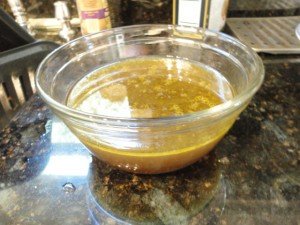Whenever I begin the process of making a soup, broth, gravy or stock, I am reminded of the folk tale Stone Soup. There are many versions of the tale, but the premise behind the story aside form generosity and charity is one of how the soup will continue to taste better as additional ingredients are added.
Likewise,at the on-line Free Dictionary there is excess of forty definitions and uses of the word stock. The definition that best suits our purpose is:
“The broth in which meat, fish, bones, or vegetables are simmered for a relatively long period, used as a base in preparing soup, gravy, or sauces.”
The terms “stock” and “broth” have many similarities and based upon the context and culture in which they are used can be considered different. For our purposes, the two words are more similar then different. If there was to be any difference it is that a stock is more concentrated in flavor then broth. A broth has more pieces of meat and vegetables.
I first started making stock out of the desire to use the leftover turkey carcass from Thanksgiving Dinner for soup. As with most desires that I have in the kitchen, they are more experiments than based upon thorough research of the intended activity. Despite some less then stellar initial results, the process of learning how to make and use stock is not that difficult. Even if it is initially a failure, the ingredients used are typically considered “leftovers” so what was the true cost?
The uses of stock are only limited to the imagination of the cook. I have used stock to prepare soup, gravy, pasta sauce and even as the median in which to boil pasta and rice.
Homemade Stock:
Over the years I have made stock from poultry (chicken and turkey) carcasses, poultry giblets / trimmings, lobster and shrimp shells and the broth from a crock pot slow cooked ham. I have a pork shoulder bone in the freezer waiting for it’s time in the pot to be made into stock. I have never made vegetable stock, but have liberally used vegetables to impart additional complexity and flavor to the liquid.
Making stock at home is relatively easy and is superior to anything that is purchased in the grocery store. The guidelines to making a stock or broth in your kitchen are simple:
- Start with cold water for hot water may inhibit the extraction of collagen from the meat and bones.
- Simmer (low and slow) versus boiling the ingredients to death. Boiling creates cloudiness in the stock, but then time is not always is luxury.
- Use little to no salt for the process of simmering and reducing the volume of water will extract any salt from the ingredients in the pot. You can always add salt after the stock / broth has been strained.
- Strain the contents of the pot through a wire mesh strainer or a colander.
- To remove any fat that may have been extracted, place the finished stock in the refrigerator and then removed the fat that has collected on the surface.
- Stocks and broth can be frozen indefinitely, but are best enjoyed when fresh.
- Do not be alarmed if your refrigerated stock has the appearance of jello or pudding. This is a good thing for the collagen extracted from the meat and bones provides an added dimension of flavor that you are seeking.
- When creating stock, you are seeking to reduce the water content by 50% or more. You can always add water when making a soup to decrease the intensity of the flavor to the level desired. The intended result of making a stock is to concentrate the flavors.
Store Bought Stock:
Whether it is in the form of a bouillon cube, paste, can or container, you can find stock and broth for poultry, beef, vegetable, seafood, mushroom and even ham. Options for beef, vegetable and chicken are easily found. Sourcing ham / pork, seafood or mushroom stock is not so easy (depending on where in the United States you live). Although store bought stocks and broth cannot compare to what you make yourself, they do serve a purpose. They provide the basis, the beginning point in which to make that soup, gravy or meal that you desire.
In my opinion, the type of stock in order of importance is the following: 1) Homemade, 2) Paste, 3) Liquid and a distant fourth 4) Cubes / Powder.



